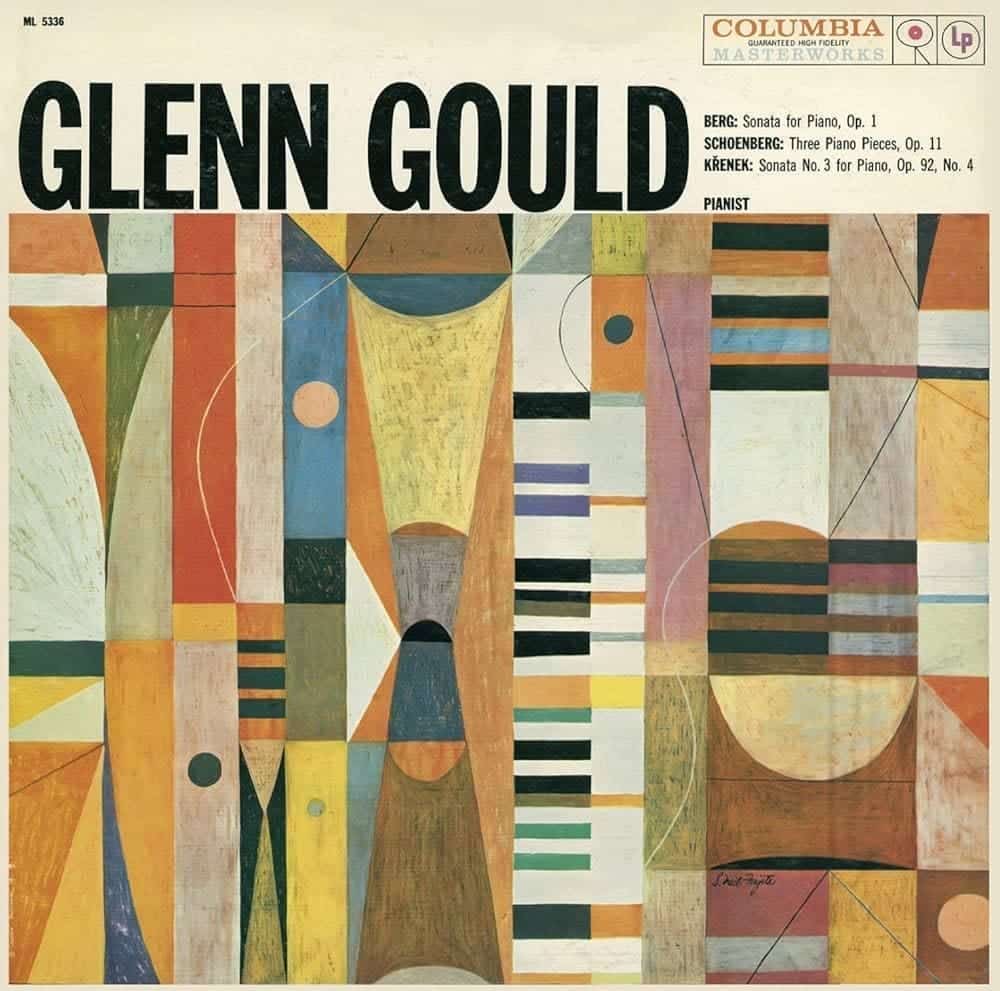In the intricate tapestry of music history, some moments stand out like bold brushstrokes on a canvas. One of these revolutionary figures who dared to challenge norms and redefine European musical expression (according to the so-called Vienna strand, conservative par excellence) was Arnold Schoenberg (1874 – 1951).
In a world where dissonance meets harmony, tradition collides with innovation, and the very essence of music is reshaped before the “ears” of listeners. Schoenberg’s innovative atonality (or, Schoenberg, using the technic alphabet) and the fascinating technique of dodecaphony sent the classical music scene into shock. It produced reactions that, without exaggeration, came to brawl.
In a musical landscape where the rules of tonality are being broken, the Viennese composer paved the way for a new era of sonic exploration. Schoenberg, a visionary ahead of his time, embarked on a journey that would forever change the course of music history.
As we delve into the depths of his innovative techniques, we unravel the complexities of atonality and the twelve-tone system, witnessing the birth of a musical revolution that continues to echo through the corridors of time.
In the fascinating journey through Schoenberg’s labyrinthine genius, each note challenges the very fabric of traditional composition, pushing the boundaries of creativity and reshaping the very essence of what music can be.

The Prelude to chaos: exploring atonality in music
Before we dive into the complexities of Arnold Schoenberg’s atonality and twelve-tone innovation, it is essential to understand the prelude to this musical revolution. Traditional music has long been governed by tonality, a system establishing a hierarchy of pitches centered on a tonic. However, when artists sought new means of expression in the late 19th and early 20th centuries, the tone began to seem restrictive.
Schoenberg, an Austrian composer and music theorist, was at the forefront of this movement, moving away from tonality. He defied established norms and embarked on a journey that would forever change the course of music history. By embracing atonality, Schoenberg shattered traditional notions of harmony and paved the way for a new era of sound exploration.
The evolution of tradition: Schoenberg’s break from tonality
Schoenberg’s move from tonality was not a sudden leap but an evolution rooted in his dissatisfaction with conventional harmonic structures. He sought to break free from the constraints of tonal centers and explore new realms of musical expression.
A pivotal moment in Schoenberg’s career came with his composition “Verklärte Nacht” (Transfigured Night) in 1899. While still adhering to some tonal elements, this piece foreshadowed his future explorations in atonality. It laid the foundation for what would become known as Schoenberg’s “atonal free” period.
Dissecting dissonance: understanding atonal harmony
The lack of a tonal center or pitch characterizes atonal harmony. In traditional music, the dissonance is often resolved by transitioning to a consonant chord. For example, a seventh chord built on the dominant (the fifth degree of a diatonic scale) typically “falls” on the tonic (the first degree) in what is called a “perfect or authentic cadence” (e.g., G7 – C). However, dissonance is embraced emancipated in atonal music, and becomes an integral part of the composition.
At first, listening to atonal music may seem chaotic or disturbing to those accustomed to tonal structures. However, within this seemingly disordered soundscape lies a complex system of organization and expression.
Atonality allows composers to explore a wide range of emotions and moods that might not be easily conveyed within the confines of tonality. Schoenberg discussed many of these concepts in his celebrated “Theory of Harmony,” a text that, by his statement, was born out of his teaching work and that addresses the various concepts of harmony with extensive critical discussions and explanations of the reasons why confident radical choices, foreign to classical and conservative culture, can be justified.
Unveiling the twelve-tone technique: a revolution in composition
The twelve-tone technique, also known as the “twelve-tone technique organized in a series in which each note is related only to the next,” was Schoenberg’s revolutionary innovation that expanded the boundaries of musical composition. This method sought to create equal emphasis on all twelve pitches within an octave, eliminating any sense of hierarchy or tonal center.
With the twelve-tone technique, Schoenberg aimed to establish a new system that would give composers more freedom while maintaining a sense of structure. Each composition would use all twelve pitches in a specific order called a tone row or series. This systematic approach ensured no tone was repeated until all others were used.

The mathematical symphony: analysis of the structure of dodecaphonic lines
Analysis of the structure of twelve-tone lines reveals the mathematical precision underlying Schoenberg’s compositions. Each initial sequence of all twelve tones can be transposed, inverted (i.e., in the sense of reversing the melodic intervals between one note and the next ascending third can become a descending third), made retrograde (i.e., inverted starting from the last note and arriving at the first). Finally, it’s possible to invert the retrograde sequence to create variations while maintaining its original melodic and harmonic relationships.
This complex manipulation of pitch sequences allows for intricate musical developments and motivic transformations throughout a piece. The resulting compositions are complex and offer endless possibilities for exploration and interpretation.
Embracing serialism: Schoenberg’s legacy in modern music
Schoenberg’s innovative techniques laid the foundation for serialism, a compositional approach that extends beyond the twelve-tone technique. Serialism includes using sequences ordered by pitch and other musical elements such as rhythm, dynamics, and timbre.
Serialism opened new avenues for composers to explore and experiment with musical structures. It provided a structure that allowed for complex organization while leaving room for individual expression and interpretation.
Beyond boundaries: the influence of atonality on contemporary composers
The impact of Schoenberg’s atonality and twelve-tone innovation extends far beyond his compositions. His revolutionary ideas have inspired countless composers to push the boundaries of traditional music even further.
Contemporary composers continue to draw inspiration from Schoenberg’s techniques, incorporating atonal elements into their works and adding unique perspectives. This continued exploration ensures that the legacy of atonality remains alive and relevant in modern music.
Reactions and controversies: the impact of Schoenberg’s musical revolution
Schoenberg’s musical revolution was met with mixed reactions from the public (who, as mentioned above, even came to blows and demanded internment in a psychiatric clinic) and other musicians. Traditionalists saw his departure from tonality as threatening established norms, while others embraced his innovative spirit.
Controversy surrounded Schoenberg throughout his career, with critics questioning the validity and accessibility of his compositions. However, this resistance did not stop him or his followers from pursuing their artistic vision.
Echoes of Innovation: tracing the legacy of atonality and dodecaphonic technique
Schoenberg’s legacy of atonality and twelve-tone technique can be heard in countless compositions of various genres. From classical music to movie soundtracks, the echoes of this musical revolution continue to resonate through time.
Composers such as Alban Berg, Anton Webern, and Igor Stravinsky (albeit very late) were influenced by Schoenberg’s innovations. Their works further expanded the foundation laid by Schoenberg, creating a rich tapestry of musical exploration and innovation.
It is also worth mentioning John Cage, a pupil of the master during his “exile” in California (due to Nazi persecution). Although Schoenberg did not hold Cage in high esteem, the latter remained very attached to his teachings and, despite his approach based primarily on noise (and its complementary absence), was always grateful to Schoenberg for his contribution to the development of Western music.
Continuous reverberation: how Schoenberg’s vision continues to shape music
Schoenberg’s vision and revolutionary approach to music continues to shape the landscape of contemporary composition. His willingness to challenge established norms and expand the boundaries of creativity has opened up new possibilities for future musicians.
Today, composers draw inspiration from Scheonberg’s atonality and twelve-tone technique, incorporating these elements into their unique styles. The legacy of this musical revolution survives, reminding us that true innovation often comes from daring to break free from tradition.
If you like this post, you can always donate to support my activity! One coffee is enough!

